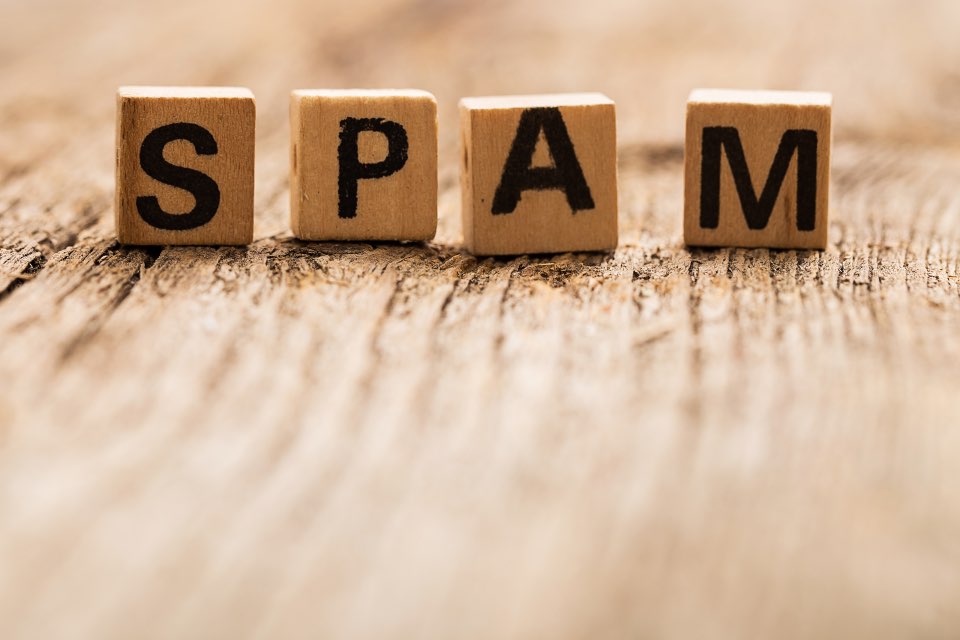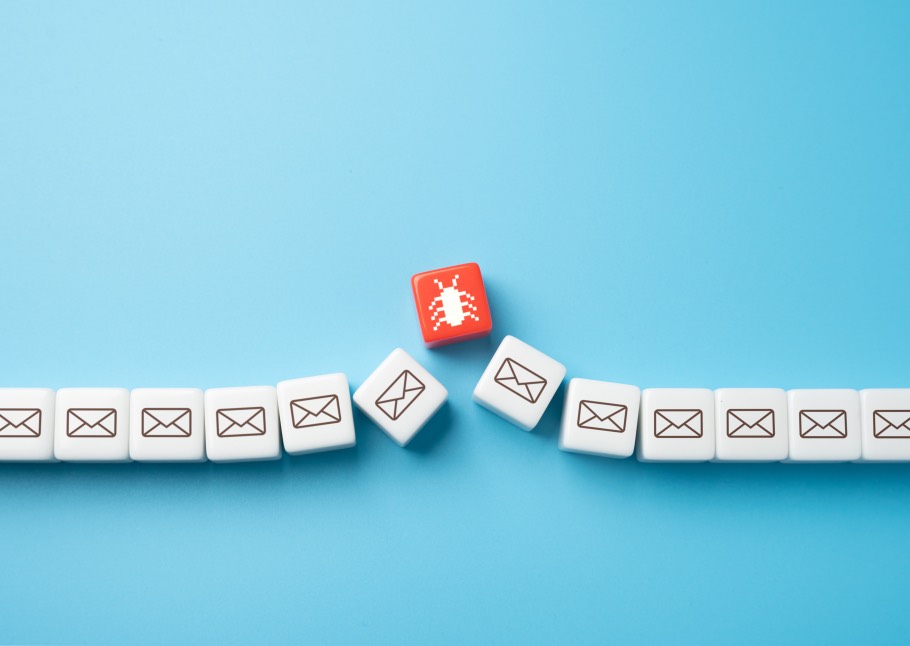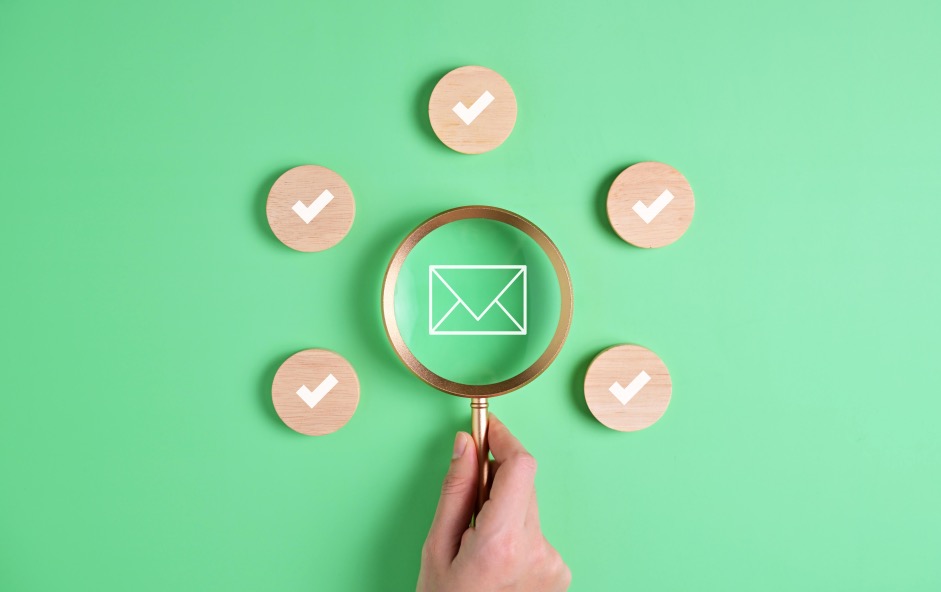You’ve crafted the perfect email – every single word polished, every image in the right place, and your brand is accurately mentioned. Then, you hit the send button, waiting for the excellent results. But… crickets. No opens, no clicks. Did they see it, did they feel it? It could have been trapped in the black hole of marketing endeavors – the spam folder.
Frustrating, right? Let’s find out the truth about this trap you’d never wish to get into.
All Potential Spam Triggers
Internet service providers use sophisticated systems to sort through millions of emails daily. They are called spam filters. Spam filters are stricter than ever, and even the most well-intentioned messages can get caught in their nets.
The good news is that once you find out how you trigger those filters, you can trick them. It is as if one has learned the game’s rules – when you know how things work in the system, you can break it.
From the number of links you drop in to how often you hit “send”, every little detail matters.
Let’s uncover the common culprits that could be pushing your emails into spam:
- Words and Phrases: One innocent “free” or “guaranteed” could be all it takes to get flagged.
- Images: Emails with too many visuals and not enough text, the spam filters may recognize them as suspicious.
- Links: Multiple links or linking to shady domains? Major red flag.
- Engagement and Reputation: Low open rates or too many spam complaints hurt your sender score.
- Sending Address: Generic or unverified email addresses raise eyebrows.
- Duplicate Emails: Repeating the same message again and again? That’s a one-way ticket to the junk folder.

Struggling to scale email campaigns without hitting spam triggers?
Contact Growth Hackers
What Are the Words That Trigger Spam Filters?
Crafting a great email isn’t just about the right things – it’s also about not saying the wrong ones. Spam filters are picky, so you should be cautious using the word mentioned below.
These are the “too spicy” words – overhyped, outdated, or just plain shady.
Here’s a breakdown of the most common spam-triggering language and patterns you’ll want to avoid:
Over-the-Top Sales Language
Overused promotional buzzwords (such as “massive savings inside”, “one-time exclusive deal”, “best price ever”, “Today only!”) are like loud pushy ads, and filters can spot them a mile away.
Symbols, Substitutions, and Odd Formatting
Creative spellings or swapping letters for numbers (“W!n T0day!”, “GR@B Th!s D3AL”, “C1aim N0w”) may seem edgy, but they just look sketchy to email providers.
Money-making Claims
Spam filters – and most readers – are skeptical of emails that promise big money for little effort (“build wealth easily”, “earn from home”, “financial freedom”, “get out of debt now”, “guaranteed return”). Be transparent instead.
Aggressive Urgency
It’s okay to encourage action, but sounding too pushy can make your message feel desperate or manipulative (phrases that cross the line:“ act now before it’s gone”,“ last chance to save”,“ time is running out”,“ only hours left”,“ respond immediately”).
Unbelievable Claims
When something sounds too perfect, it usually doesn’t pass the sniff test for readers or spam filters. Examples to keep out: “100% guaranteed win”, “you’ve been selected”, “risk-free offer”, “this is not spam”.
ALL CAPS + Too Many!!!
Shouting never helped anyone get heard in email marketing. Capital letters and exclamations just scream “spam.” Overdone subject lines would be like: “YOU’RE INVITED!!!”, “FREE GIFT INSIDE”, “READ NOW!!!”, “LIMITED TIME ONLY!!!”.
Unverified Health or Wellness Claims
Even if you’re in the health space, bold promises can trigger spam alerts or even compliance issues. Be careful with phrases like: “Cure your pain instantly”, “Miracle solution”, “Fast weight loss”, “age-defying results”,“ scientifically proven” (without the proof).
Unrealistic Giveaways
Who doesn’t want a free vacation or a luxury car? But unless you’re truly offering one (and can prove it), steer clear. Examples to skip: “Win a free iPhone”, “live like a millionaire”, “get a private island”, “luxury trip giveaway”, “claim your free mansion”.
Security-related Language that Feels Suspicious
Messages that sound like account warnings can look tricky, even if your intent is legit. Trigger phrases include:“ confirm your login now”, “protect your account”, “urgent security notice”, “verify payment details”, “immediate update required”.

Employment Pitches that Sound Too Easy
Subject lines that offer dream jobs without effort are often treated as scams, both by filters and subscribers. Be wary of using: “no experience needed”, “work from anywhere”, “get hired instantly”, “high-paying jobs now”, “unlimited income opportunity”.
Typos, Grammar Mistakes, and Sloppy Copy
Even if your offer is gold, spelling errors make it look like spam. Filters catch it — and so do humans. Examples of what not to send: “excluzive deal inside”, “your chanse to win”, “sign up for our newzletter”.
How Can You Avoid the Trap?
Now that we’ve taken a deep dive into the sea of spam-triggering words and tactics, you might be wondering: Is it even possible to write a high-converting email that doesn’t raise red flags? The answer is yes, and it starts with flipping your perspective.
Instead of trying to “beat” the system, think of it like this: write for humans first, and the inbox second. Spam filters aren’t out to get you, they’re out to protect readers. So the more value-driven, clear, and authentic your email is, the more likely it is to pass the test.
Let’s go beyond what not to do and focus on what you should do to make sure your emails get delivered, opened, and acted on.
Scale email campaigns without hitting spam triggers—reach more inboxes now!
Work with Growth Hackers
How to Write Emails that Land in Inboxes, Not Spam Folders
So now you know what not to say – but how do you write emails that pass the filters and connect with real people?
Here’s the good news: you don’t need tricks. You just need to sound real, stay relevant, and respect your reader. Think of it less like beating the system and more like speaking the system’s language, while keeping it human.
Here’s how to make sure your next send hits the inbox, not the junk pile:
1. Write like a Person, not a Pitch
Ditch the robotic templates and overly polished sales talk. If it is something that you would be deleting, then do not send it. Write like you are addressing one person. Do not put words into a void.
2. Keep Your Promises in the Subject Line
Your subject line is the handshake. Make it honest, not clickbait. If you say “Free gift” and there’s a catch, people (and filters) won’t trust you next time.
3. Watch Your Link Game
Too many links = red flag. Sketchy or shortened URLs = even worse. Only include what’s necessary, and always double-check that they lead to secure, trustworthy domains.
4. Balance Text and Images
An email that’s just one giant graphic? Spam filter bait. Use a healthy mix of text and visuals, and don’t forget to add alt text for accessibility and deliverability.
5. Clean Up Your Sender Reputation
Send from a verified domain, use a consistent address, and keep your engagement up. If people open, click, and reply to your emails, spam filters start to see you as legit.
6. Proofread like Your Deliverability Depends on it (Because it does)
Typos and sloppy formatting scream spam. Give your copy a second look – or better, get someone else to – before you hit send.
7. Let People Unsubscribe Easily
It sounds counterintuitive, but making it easy to leave builds trust. And spam filters like brands that play fair.

Test Before You Send: The Power of Spam Checkers
Before you hit “send” on that beautifully crafted campaign, there’s one last step, smart marketers swear by: running your email through a spam checker. Think of it as your email’s security scan – a way to catch the little things you might miss that could derail your deliverability.
Spam checkers analyze everything, starting from the subject line and formatting, and ending with the number of links as well as images, and overall content structure. They imitate the logic used by spam filters, so you can fix issues before your message leaves your inbox. Some platforms (such as Mailmeteor, GlockApps, or Mail Tester) score your email’s likelihood of landing in spam and give actionable feedback.
Remember: even if your content is really good, one broken link or messy code can get your email flagged. Therefore, spam checking acts as your safety net.
So, do not just trust your gut. Instead, test, refine, and then send them to your audience without worrying about anything.

Final Thoughts on How to Scale Email Marketing Campaigns Without Hitting the Spam Filters
At the end of the day, email marketing isn’t about tricking filters – it’s about building genuine relationships. The best way to scale without landing in spam is to stay helpful, honest, and clear. That means writing like a human, delivering real value, and making every message feel like it’s meant for the person reading it.
Spam filters are merely gatekeepers. Show them and your audience that you’re the kind of sender who respects email marketing. If you keep your content polished, intentions understandable, and your strategy consistent, your emails will be delivered exactly where they belong.
Growth Hackers is a dynamic email marketing agency helping businesses from all over the world grow. There is no fluff with Growth Hackers. We help entrepreneurs and business scale their email campaigns without hitting spam triggers, increase their productivity, generate qualified leads, optimize their conversion rate, gather and analyze data analytics, acquire and retain users and increase sales. We go further than brand awareness and exposure. We make sure that the strategies we implement move the needle so your business grow, strive and succeed. If you too want your business to reach new heights, contact Growth Hackers today so we can discuss about your brand and create a custom growth plan for you. You’re just one click away to skyrocket your business.




